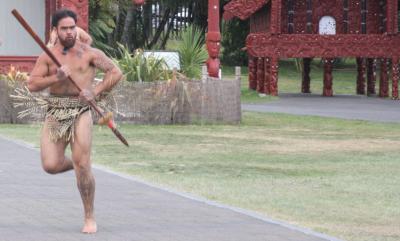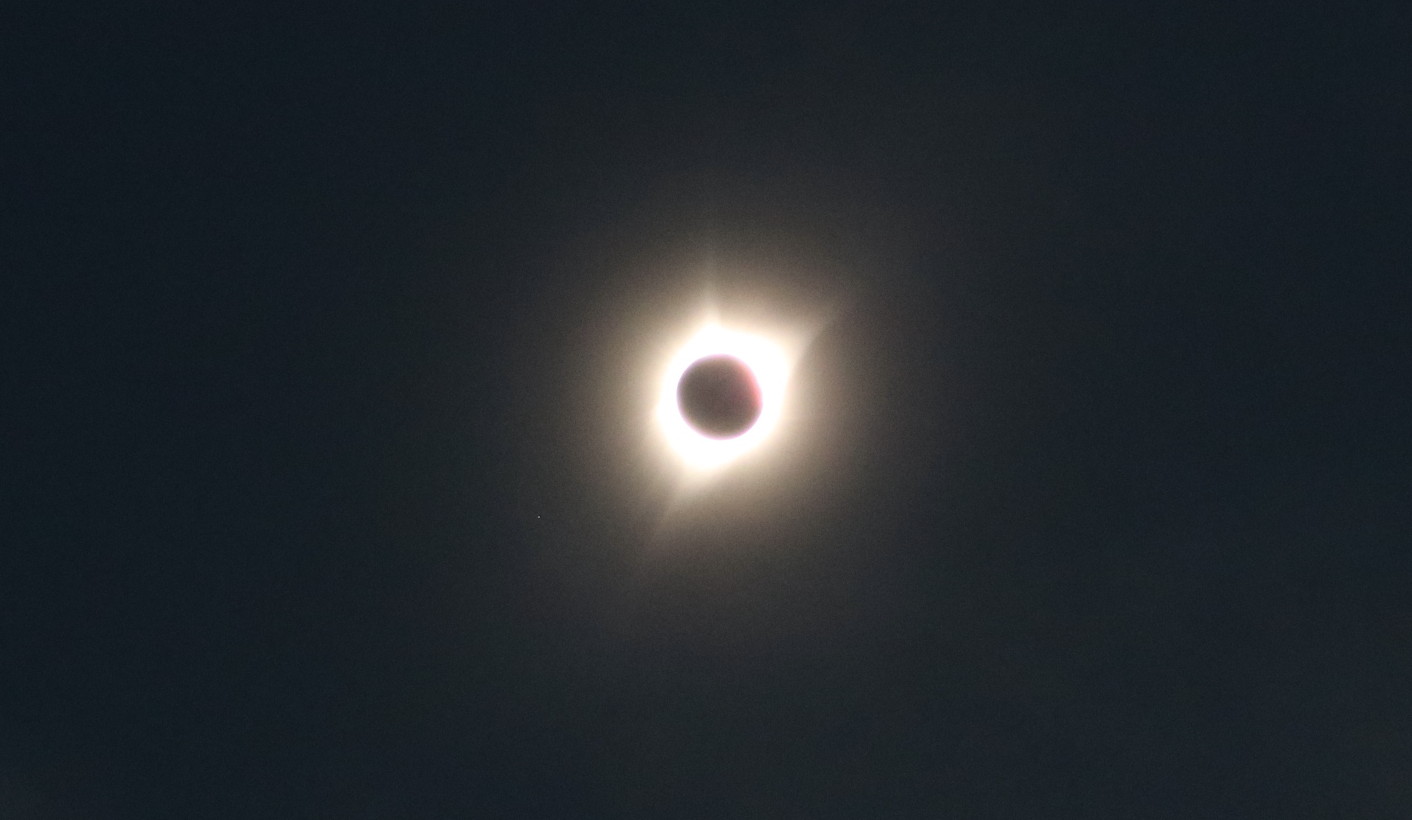Rotorua - Maori Ancestral Home
 Rotorua is a good size town. Among its claim to fame is having a number of local boys playing on the All Blacks Rugby Team, the national team of New Zealand. The name comes from their original uniforms which were the least expensive available, all black uniforms, no stripes, no decoration, no names. The team has become a cause celebre for the nation and now are internationally ranked in the top rugby in the world.
Rotorua is a good size town. Among its claim to fame is having a number of local boys playing on the All Blacks Rugby Team, the national team of New Zealand. The name comes from their original uniforms which were the least expensive available, all black uniforms, no stripes, no decoration, no names. The team has become a cause celebre for the nation and now are internationally ranked in the top rugby in the world.
We had one objective in Rotorua and that was to learn more about the Maori people. There are several interpretative centers in the Rotorua area. We chose Te Puia, and went there on Friday, February 7. This center hosts a national center for the Maori arts. There is an air of authenticity in this park with all the statuary and art works on display. On the grounds are several active geysers. These geysers erupt constantly with periodic pulses that take them higher into the sky. We chose to attend a dance performance for our introduction. After a short introduction, we were greeted outside the meeting house by a warrior who approached in a menacing manner to greet our leader and determine our intent, peaceful or war party. Once that was settled, we were invited to advance. Then the performing group danced and invited us into the meeting house. The performance that followed was most interesting. The Rotorua area is the traditional home area of the Maori. The native dances by the women were graceful and athletic, the men danced the menacing dances of warriors. During their dances they would periodically make fierce face and stick out their tongues.
After the performance we took a tour of the park. Our guide started with a brief introduction and then took us toward the geysers. As we walked, Louise asked him about his hat which looked just like the hats we had seen when we visited the Olympic Peninsula. These hats are woven from wood strips and take quite a bit of effort to prepare the wood strips and then weave the hat. It turned out the hat was from the Salish tribe in the Pacific Northwest. He had been at Montana State University in Kalispell, Montana for several years. His role was to bring more of the Blackfeet and Salish people into the arts programs at Montana State University. From there we were off and running. We had a good conversation with him between the stops to describe the various features of the geysers. As we looked at the geysers he pointed out the boundaries of the caldera of the volcano in which we were standing. The distant hills he pointed out were well outside the city of Rotorua. The caldera was formed by a single eruption long ago. Obviously the volcanic activity continues as the steaming vents and geysers are all over the area. If the volcano were to erupt today, a whole town would be destroyed.
Our guide then went on to describe the nature of the Maori people. Among the points he made was that the Maori had a good sense of their history and where they came from. Their ancestors came from Polynesia and then went out to Hawaii, New Zealand and other Pacific islands. He talked of the culture of the people and how and why tribes split and warred with each other. He said the tongue in the war dances was a threat to an enemy that they wanted to eat the enemy. Eating an enemy warrior was a way to desecrate them. They weren’t eating for food, they ate their enemies when they defeated them to destroy them completely. They turned them to feces. His phrase, “If you are beaten you are eaten!”
Tattoos which are a part of the culture were part of a coming of age ceremony and were done by cutting the skin and inserting dye. It was extremely painful and sometimes resulted in infection or death but it was seen as a test everyone had to submit to. His tattoos were done with modern equipment he said! Tattooing of women was prohibited by the New Zealand government in the early 1900’s but continued into the 1930’s. Women’s tattoos consisted of a mustache and circled the lips and down the chin like a beard. Women were extremely fierce and didn’t run the tribe but let their men know when they were out of line.
The last part of the tour was devoted to the arts. He demonstrated how the Maori made their fabrics by stripping the fibers from a flax plant. Using an oyster shell he cut across the leaf then pulled the ends of the fibers out. Holding them he used the shell to peel the leaf away from the fibers in a smooth motion. Then he wove the strands of fiber into a strong multi strand string by rubbing them on the calf of his leg with his hand. This was done in a series of motions taking no more than a minute. Once done he passed the string around the group. Then he showed how the grass skirts are made using the shell to cut away sections of the leaf and leaving others intact. The alternate sections of leaf and fiber then curl naturally to make sections with fiber and sections with the curled leaf. He gave that sample to Louise and it hangs in the campervan. If we can take it with us to Australia, Fiji and then bring it home to the US, she will have a nice souvenir of our trip!



0 Comments
Recommended Comments
There are no comments to display.
Please sign in to comment
You will be able to leave a comment after signing in
Sign In Now